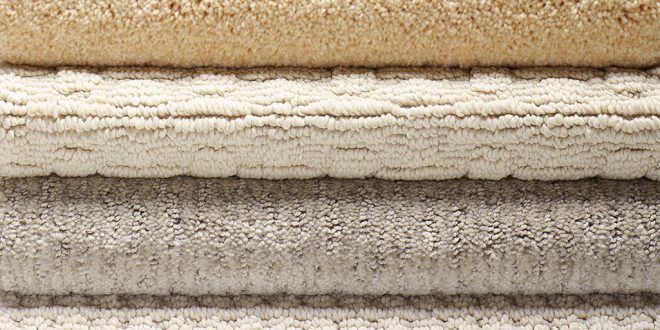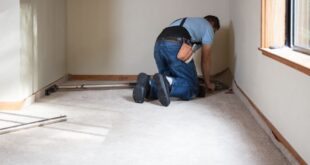For high traffic “living” areas in the home such as kitchens, living rooms and dining rooms, hardwood is more popular than carpet these days. However, that doesn’t mean carpet is a thing of the past. Carpet is still widely used in other rooms in the house.
A comprehensive look into the world of carpets. The different styles categorised on the basis of material, construction, and pile height, their advantages and limitations.
The different styles of carpeting generally vary on the basis of the material, construction and pile height. Each one of them has benefits and drawbacks which I will illustrate in detail, hoping to help you choose the best option for your home. Whether it is the trimmed plush or the messier frieze, make an informed decision for your home keeping in mind your style of decor with the help of this post!
Although carpet can make a world of difference in your home, it doesn’t mean that every type in your home is made in the same way. You have to choose a quality carpet that fits in perfectly with the surroundings around your home. It needs to come with not only a comfortable body but also a great pile and color. You must also know how well you can maintain a good carpet.
DIFFERENT TYPES OF CARPET : MATERIAL
A carpet’s material is a very important factor that helps determine its quality. There are different fibres used to make carpet, from natural yarns to synthetic ones. Read about their properties, advantages and weaknesses in the following paragraphs.
NYLON
Nylon is the most durable and stain resistant carpet fiber available, when treated with stain protection. It is the fiber of choice for homes with pets and children and for those who entertain a lot. Perfect for heavy traffic in hallways and stairs.
Nylon is very soft, durable, and resistant to stains and abrasion. It is the most popular of carpet fibers by a large measure—by some estimates, about 90% of all residential carpets are made of nylon. It has good resistance to wear, mold, mildew, and rot, and it is easy to dye and holds its color well. It is usually affordably priced—less expensive than wool but more expensive than other synthetics. These carpets, if cared for well, can last 12 to 15 years, making it the most durable of the synthetic fibers.
WOOL
Wool is the most commonly used carpet fibre. The natural fibre’s durability and strength, paired with its luxurious appearance make it the best option for those looking for a worthy long-term investment. It is versatile and extremely comfortable to the touch. The production of pure wool carpet uses little or no chemicals which is why it is a great choice for allergic people. Wool fibres are great at hiding soil as they don’t reflect light like while also being flame-retardant.
The drawback of this extremely soft and resistant fibre is that it is susceptible to mold growth. This is because of its ability to absorb and retain moisture which also leads to easy staining. Because of these reasons, wool requires regular cleaning and it wouldn’t be suitable for those living in homes with high indoor humidity. Wool is also more expensive compared to synthetics and is sensitive to certain chemicals.
Despite these limitations, wool still makes for the best carpet fibre also because of its excellent sound and heat insulation properties and is comfortable under the feet. It is also worth the higher costs because of how long-lasting it is. Get into the practice of employing regular upkeep habits and enjoy a durable and luxurious carpet!
COTTON
Cotton was also a popular carpet-manufacturing material until synthetics entered the market. It is well-known for its resistance to heat and static and also its absorption properties. This makes cotton a great material for houses in hotter climates and for those who like to experiment with vibrant colour options. When spun tightly, cotton carpet is very strong and durable.
However, the property of absorption can also cause troubles as this means cotton carpets stain easily. Wet cotton carpets dry quicker than wool but moisture-retention isn’t great, especially in a humid region, as this makes the carpet prone to mold and mildew. Cotton is also flammable and degradation of cellulosic cells in the fibres leads to browning.
Polypropylene (Olefin)
Polypropylene is the next best-selling carpet fiber, used in almost 80% of commercial applications and in growing numbers of residential settings, since it wears very well and is almost as soft as nylon. Also known as olefin, polypropylene fibers are similar to natural wool and are often used as a synthetic wool substitute. This fiber is highly stain-resistant but is prone to soiling and holding onto oils which in turn, collect dirt. It is, however, relatively easy to clean—bleach can even be used in some cases. Polypropylene is not as resilient as nylon, so is therefore commonly used for loop-style carpets, such as berbers. The cost of polypropylene is slightly less than most nylon carpets, but more than polyester and acrylic.
POLYESTER
Moving on to synthetic carpet fibres, let’s start with polyester that became popular in the carpet industry when producers started to look for a cheaper and resistant alternative to wool. It is luxurious and soft and has the additional ability to repel liquids. It can also hold dyes well which is why polyester carpet comes in beautiful and lively colours. PET, that is made of recycled plastic bottles, is an eco-friendly option.
Polyester is prized for its ability to hold vibrant, fade-resistant colors. The fiber is also non-allergenic. One type of polyester carpet, known as polyester/PET, is made from recycled plastic bottles, making it eco-friendly. Its main drawback is that polyester is prone to flattening under weight, making it a bad choice for high-traffic areas. It can also be prone to oil stains, which are very hard to remove from polyester fiber.
OLEFIN
Also known as polypropylene, olefin carpet is affordable, resistant to stains and visually similar to the smooth and plush wool. It is also easy to maintain and requires only regular vacuuming. Olefin carpets hold dye well and also come in a range of colours. Used in constructing Berber carpet, olefin is durable enough for high-traffic and heavy footfall areas.
The drawbacks of installing olefin carpeting in your home are its oil-stain-absorption properties, which take a long time to get out of, fading when placed under direct sunlight and lower strength compared to a synthetic like nylon, which we will explore in the coming paragraphs.
ACRYLIC
Acrylic is a very commonly used alternative for wool because of its plush and cosy look that comes at a low cost. The material has good static-resistance and it repels moisture very well, making it long-lasting. Acrylic carpets are colourfast and require easy upkeep, also remaining bright and lively for a long period.
Sometimes marketed as “synthetic wool” because it offers the feel and appearance of wool at a fraction of the price, acrylic has good resistance to static electricity, moisture, mildew, fading, and staining. But it is not a very durable material, and it doesn’t hold up well in high-traffic areas. It is sometimes blended with wool. Acrylics can sometimes turn brown if stained with certain alkaline chemicals, such as those found in cleaning products.
 Carpet Guides All About Carpet Installing
Carpet Guides All About Carpet Installing 

